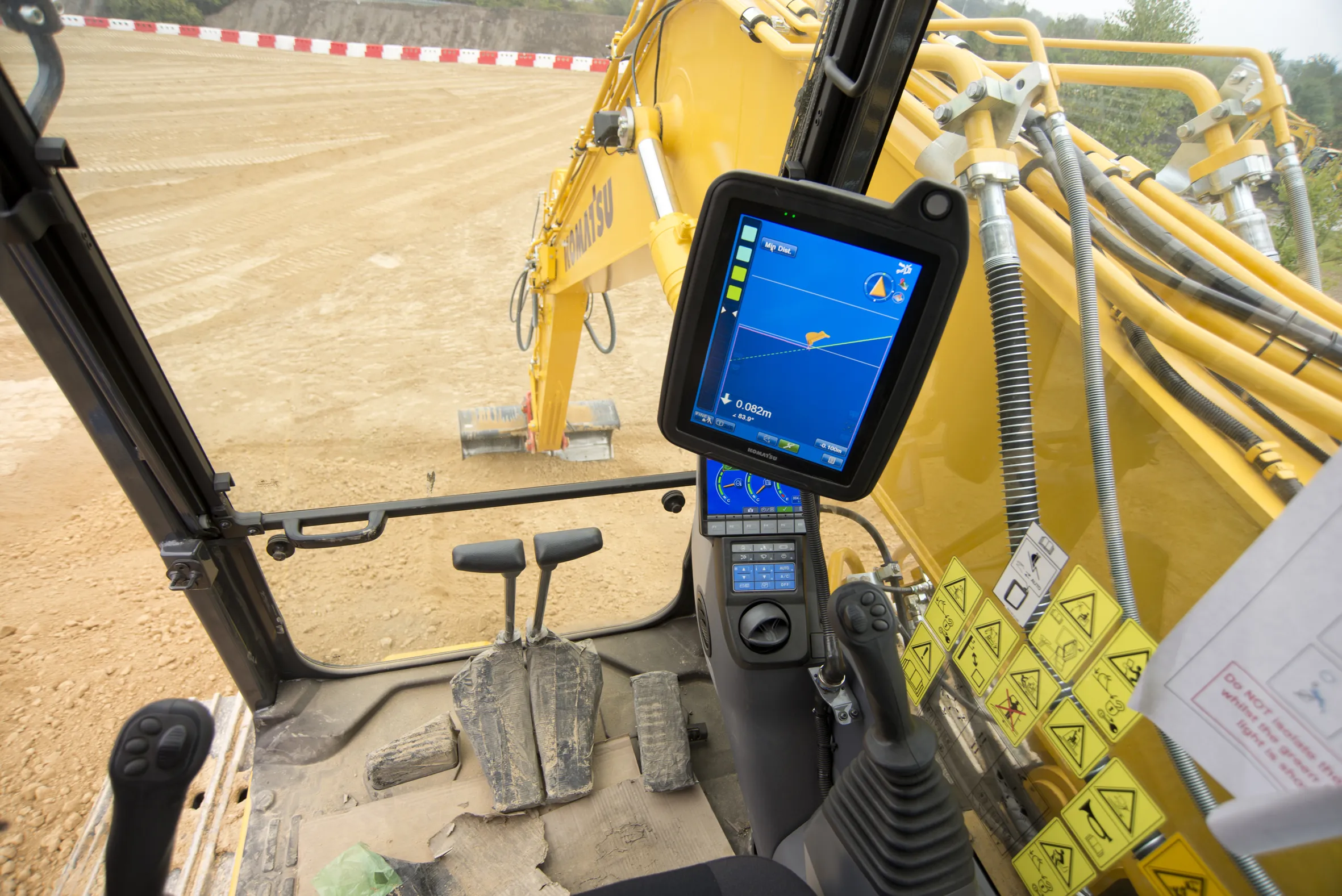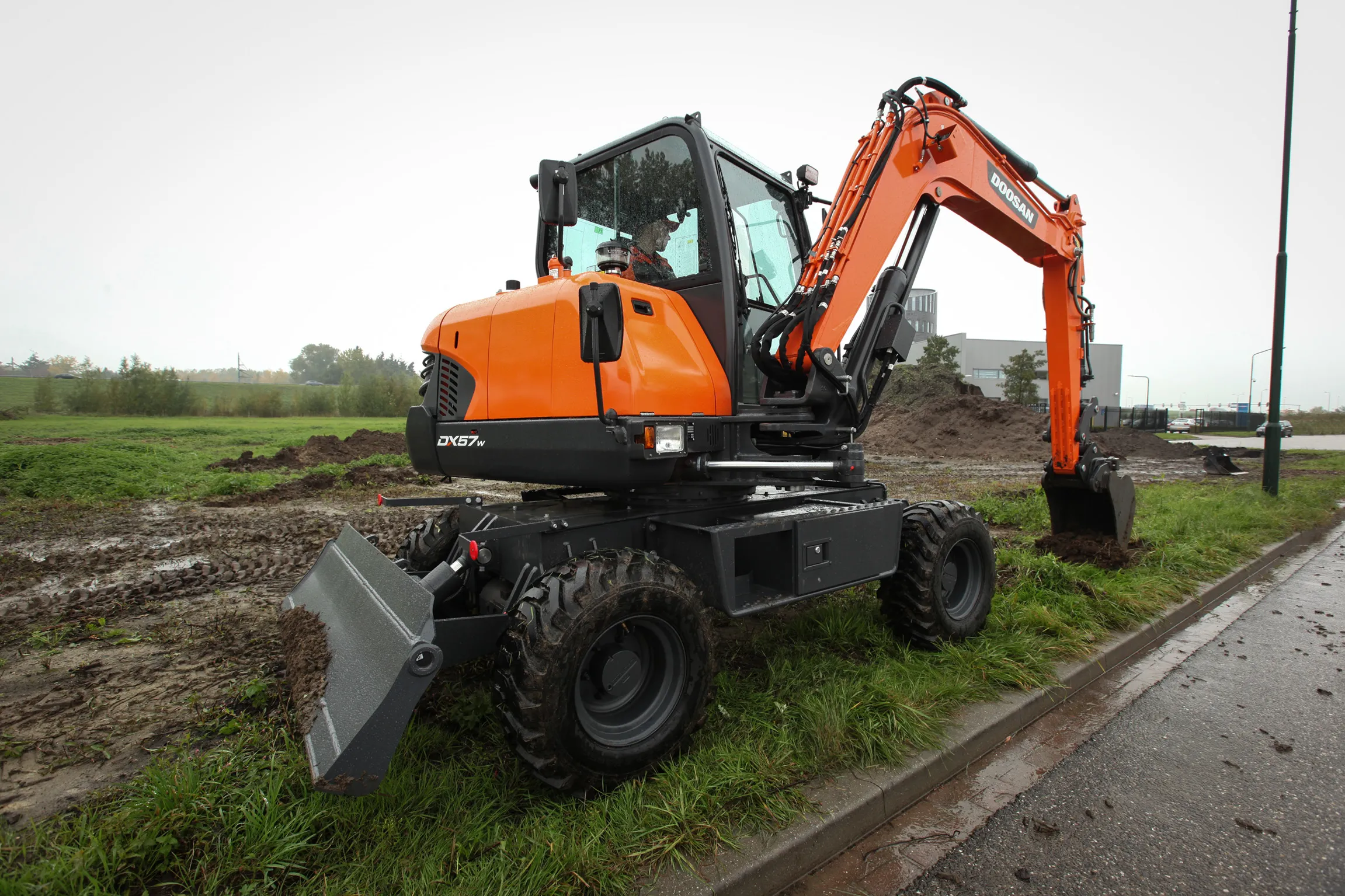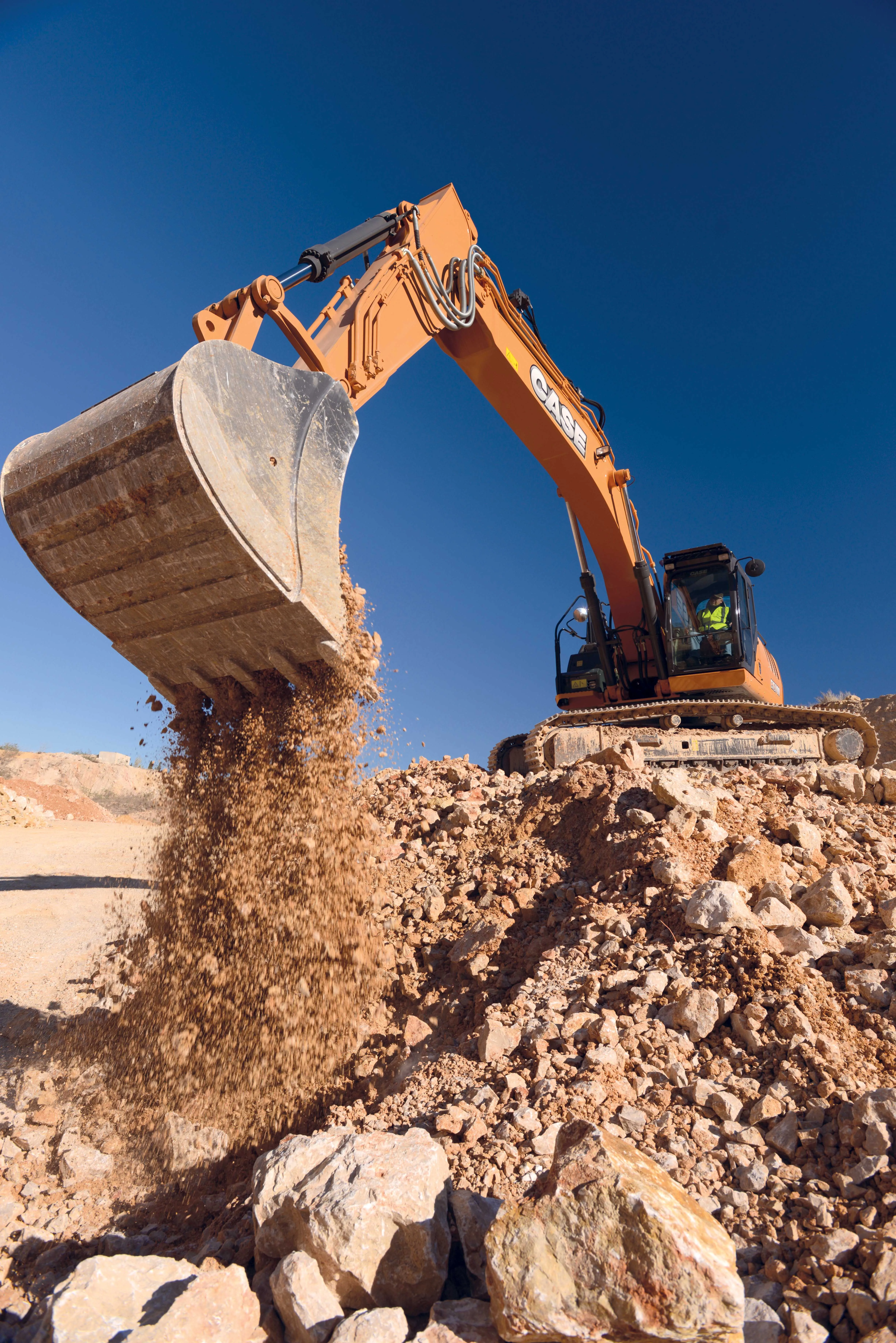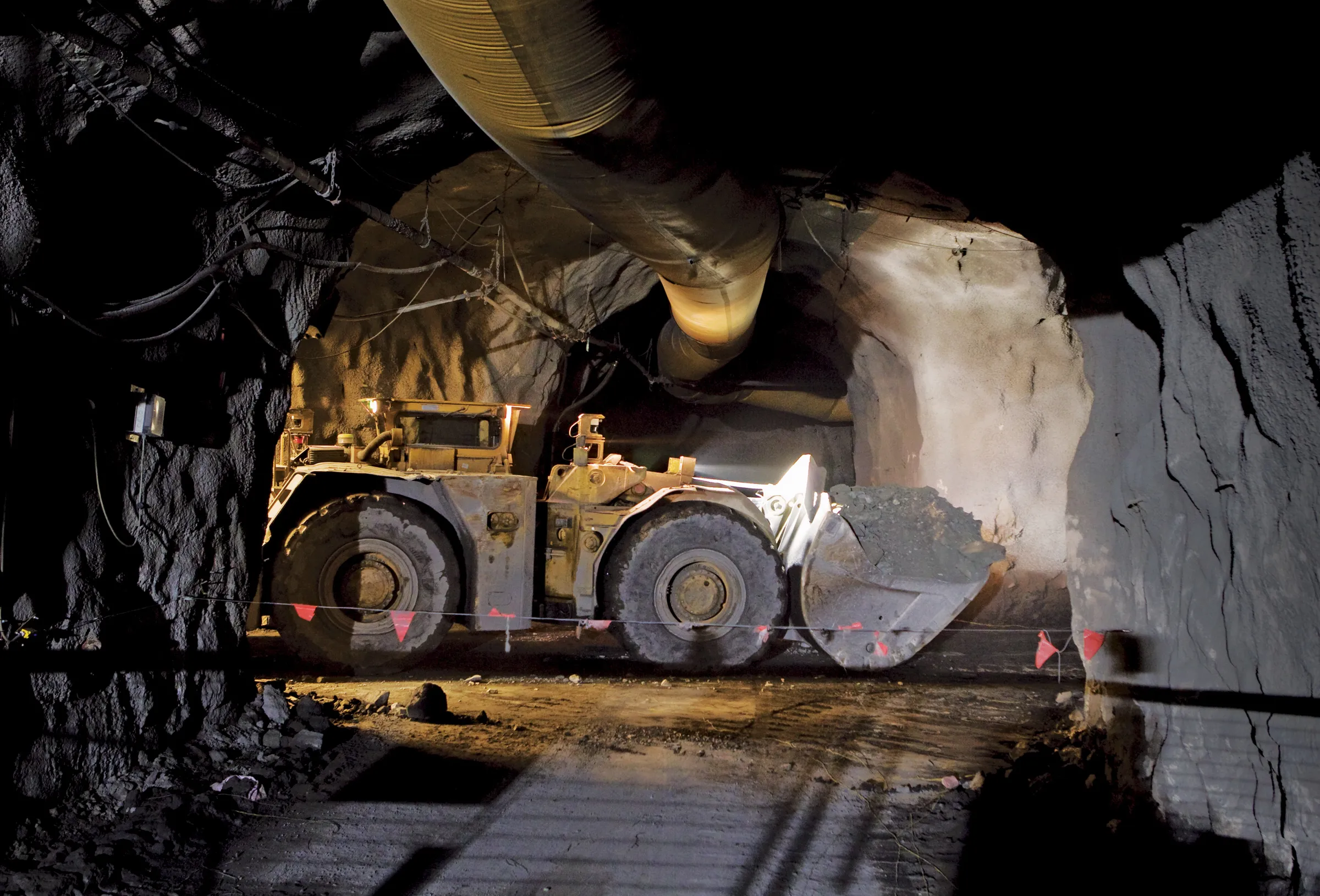Komatsu has continued its development of Intelligent Machine Control (IMC) systems, in cooperation with global partner Topcon, with the launch of the PC210LCi-10, the first fully integrated OEM machine control crawler excavator. Unlike its IMC-equipped D61PXi/EXi dozer that was introduced last year, the popular 21 tonne excavator has been unveiled first in Europe, rather than in Japan or the USA.
The machine, which is built at Komatsu UK’s excavator plant in Birtley in the North East of England, offers sem
December 8, 2014
Read time: 4 mins

Komatsu has continued its development of Intelligent Machine Control (IMC) systems, in cooperation with global partner Topcon, with the launch of the PC210LCi-10, the first fully integrated OEM machine control crawler excavator. Unlike its IMC-equipped D61PXi/EXi dozer that was introduced last year, the popular 21 tonne excavator has been unveiled first in Europe, rather than in Japan or the USA.
The machine, which is built at2300 Komatsu UK’s excavator plant in Birtley in the North East of England, offers semi-automatic control, to improve digging accuracy and increase speed in grading and levelling tasks. As with the firm’s IMC dozers, it is possible to use the system in both rough digging and fine grading, greatly cutting the time required to get down to grade. It can even be used in mass excavation applications, preventing over-digging as the operator nears the desired level.
The PC210LCi-10 is equipped with an inertial measurement unit (IMU) in the base of the upper structure, which records precise machine orientation and machine angle from gyro and accelerometer data. Komatsu’s stroke-sensing hydraulic cylinders, which use a rolling sensor on the cylinder cap to calculate the extension of the ram, are fitted to the main lift, dipper arm and bucket links.
Unlike the firm’s dozers, that have a single GNSS antenna concealed on the roof of the cab for GPS location, the excavator requires two antennae, as the boom can interrupt a single source. These are mounted on the upper structure hand rails, and must be connected before use each day.
The most noticeable thing about the control system for the operator, is a massive 12.1” full colour touchscreen monitor in the cab. This provides full mapping and 3D representation of the machine and the site terrain, with the operator free to choose the exact information to be displayed, depending on preference and task.
The system allows the operator to set a number of parameters to meet the site design prior to digging. In a trenching task for example it is possible to set the maximum dig depth. As the bucket approaches this point the machine will no go deeper, the operator can simply pull in the dipper arm and the machine will automatically lift the main boom to create a perfectly flat trench bottom at the desired depth.
For batter or slope work, IMC again automatically lifts the boom as the operator pulls in the dipper, this time creating the desired slope angle. The driver simply takes over when the time comes to crowd the bucket and lift away the spoil. This can be achieved with the machine at the top or the bottom of the slope.
Unlike the dozer system IMC is not able to take full control of the excavator, as it has too many movement options. However it offers far more than a plug-and-play machine guidance tool and does allow the operator to work faster without fear of over-digging or going past the desired grade profile. This cuts time and fuel consumption.
Customers have complete access to the machine through client support and Komtrax, both of which can be integrated to some extent with other proprietary site management systems to deliver daily work tasks to the machine. However for those looking to take the system further,342 Topcon offers its Sitelink 3D Enterprise site management tool as an option.
Sitelink 3D provides complete access to machine data, with a two-way transfer of information to provide engineers on site with as-built data from the machine, reducing the need for final engineer checking of grades on site. The system can be used to report daily volumes and for various task management functions.
This system will only work with Topcon IMC controlled equipment, however Topcon is also working in partnership with6791 Ammann and 172 Bomag, along with several haul truck systems, to provide complete road construction site management compatibility.
“The margins in road construction have become so small that customers are starting to talk to us concerning machine control,” said Komatsu Europe’s deputy general manager Dirk Legrand.
“The market today is very open to listening to us about this. Jobsite management in the future is where customers will make money.”
Of course when not working with machine control, the PC210 can perform as well as any other 21 tonne excavator. It can even be operated with a hydraulic breaker without damaging any of the built-in IMC systems.
Komatsu has already sold 44 of the D61PXi machines in Europe and more than 500 worldwide, so the technology has been well proven. The company also offers IMC on its D31 dozer and later this year will launch the system on the D85EXi/PXi-18 and the D155AXi-8 dozers.
Additional crawler excavators will in time join the IMC line-up, as customers realise the benefits of a fully integrated, factory-built machine control system.
The machine, which is built at
The PC210LCi-10 is equipped with an inertial measurement unit (IMU) in the base of the upper structure, which records precise machine orientation and machine angle from gyro and accelerometer data. Komatsu’s stroke-sensing hydraulic cylinders, which use a rolling sensor on the cylinder cap to calculate the extension of the ram, are fitted to the main lift, dipper arm and bucket links.
Unlike the firm’s dozers, that have a single GNSS antenna concealed on the roof of the cab for GPS location, the excavator requires two antennae, as the boom can interrupt a single source. These are mounted on the upper structure hand rails, and must be connected before use each day.
The most noticeable thing about the control system for the operator, is a massive 12.1” full colour touchscreen monitor in the cab. This provides full mapping and 3D representation of the machine and the site terrain, with the operator free to choose the exact information to be displayed, depending on preference and task.
The system allows the operator to set a number of parameters to meet the site design prior to digging. In a trenching task for example it is possible to set the maximum dig depth. As the bucket approaches this point the machine will no go deeper, the operator can simply pull in the dipper arm and the machine will automatically lift the main boom to create a perfectly flat trench bottom at the desired depth.
For batter or slope work, IMC again automatically lifts the boom as the operator pulls in the dipper, this time creating the desired slope angle. The driver simply takes over when the time comes to crowd the bucket and lift away the spoil. This can be achieved with the machine at the top or the bottom of the slope.
Unlike the dozer system IMC is not able to take full control of the excavator, as it has too many movement options. However it offers far more than a plug-and-play machine guidance tool and does allow the operator to work faster without fear of over-digging or going past the desired grade profile. This cuts time and fuel consumption.
Customers have complete access to the machine through client support and Komtrax, both of which can be integrated to some extent with other proprietary site management systems to deliver daily work tasks to the machine. However for those looking to take the system further,
Sitelink 3D provides complete access to machine data, with a two-way transfer of information to provide engineers on site with as-built data from the machine, reducing the need for final engineer checking of grades on site. The system can be used to report daily volumes and for various task management functions.
This system will only work with Topcon IMC controlled equipment, however Topcon is also working in partnership with
“The margins in road construction have become so small that customers are starting to talk to us concerning machine control,” said Komatsu Europe’s deputy general manager Dirk Legrand.
“The market today is very open to listening to us about this. Jobsite management in the future is where customers will make money.”
Of course when not working with machine control, the PC210 can perform as well as any other 21 tonne excavator. It can even be operated with a hydraulic breaker without damaging any of the built-in IMC systems.
Komatsu has already sold 44 of the D61PXi machines in Europe and more than 500 worldwide, so the technology has been well proven. The company also offers IMC on its D31 dozer and later this year will launch the system on the D85EXi/PXi-18 and the D155AXi-8 dozers.
Additional crawler excavators will in time join the IMC line-up, as customers realise the benefits of a fully integrated, factory-built machine control system.









